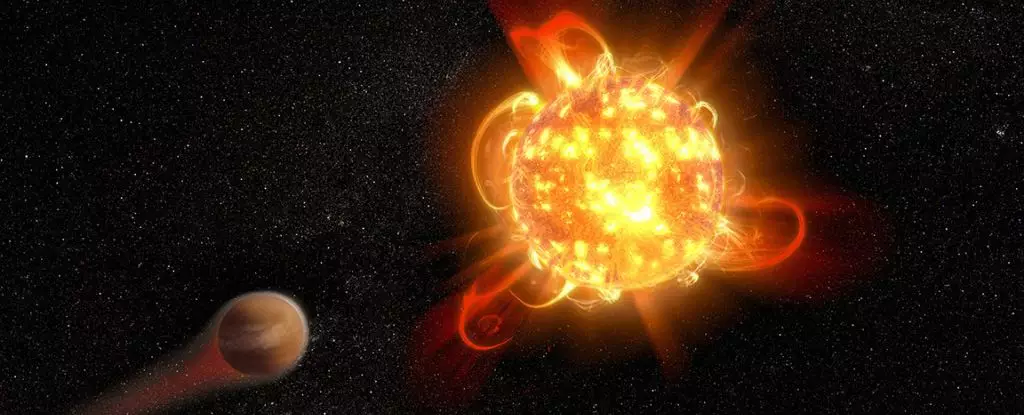M-class stars, commonly referred to as red dwarfs, are intriguing celestial bodies that challenge our assumptions about the habitability of extraterrestrial environments. Characterized by their small size and cooler temperatures compared to our Sun, red dwarfs make up approximately 70 percent of the stars in the Milky Way galaxy. Their relatively calm demeanor, arising from a slow burn of fuel that can last for billions of years, lends an impression of stability and reliability. Consequently, astronomers have often considered red dwarf systems as potential havens for life, particularly due to their likelihood of hosting rocky planets within habitable zones—regions where liquid water could exist.
However, a deeper inspection reveals that these stars, while abundant and enduring, present unexpected hazards that could severely affect nearby planets. The very phenomena that define red dwarfs also render them far less benign than they appear.
The Spectral Anomalies of Stellar Flares
Recent research has highlighted a critical issue affecting the habitability of planets orbiting red dwarfs—stellar flares. These events are frequent and can be incredibly energetic, releasing large amounts of radiation, particularly in the ultraviolet (UV) spectrum. Traditionally, studies of such flares have relied on optical wavelengths, neglecting the far-reaching and potent implications of UV radiation.
A recent review of a decade’s worth of observations from the GALEX space telescope examined data from around 300,000 stars, concentrating specifically on 182 flare events from M-class systems. The researchers uncovered that the UV emissions produced during these stellar flares were significantly underestimated in previous studies. Notably, nearly all flares analyzed emitted UV radiation levels far exceeding what would be predicted by conventional blackbody spectral models, which inaccurately assumed a fixed temperature of 9,000 K for such emissions. This critical finding suggests a dire re-evaluation of the conditions under which life could exist around red dwarfs.
UV radiation plays a pivotal role in the chemistry of life. While certain doses of high-energy photons can catalyze the formation of complex organic molecules, essential for the development of life, excessive exposure presents severe risks. The implications are stark: intense flares could strip away planetary atmospheres and deplete protective ozone layers. Therefore, even if a planet resides within a theoretically habitable zone—allowing, for instance, for the presence of liquid water—its environmental conditions might be rendered hostile owing to the extreme UV radiation from its host star.
This contradiction challenges the assumption that red dwarfs, given their longevity and potential for stable planetary orbits, are ideal candidates for life. Instead, they could cultivate environments where the energy from stellar flares undermines the very conditions necessary for habitability.
The culmination of these findings calls for a re-evaluation of the criteria used to assess the habitability of exoplanets in red dwarf systems. The existence of short-lived, intense flares creates an environment characterized by rapid fluctuations in radiation levels, presenting a potentially hazardous atmosphere for developing life.
Researchers and astronomers must now consider not only a planet’s distance from its host star and its capacity to sustain liquid water, but also the frequency and intensity of stellar flares. Possible protective mechanisms on these planets, such as strong magnetic fields, must also be investigated to assess whether they could shield the atmosphere from extreme UV radiation.
The findings regarding the radiation output of red dwarf stellar flares indicate a critical shift in our understanding of habitability potential in the universe. While red dwarfs remain abundant, their energetic dynamics render them less benign than previously assumed.
As scientists peel back the layers of this complex celestial narrative, we are reminded of the delicate balance of factors influencing the formation and sustainability of life. The search for extraterrestrial life will continue, but it will now be conducted with a more nuanced understanding of the hostile conditions that could lurk in the shadows of these seemingly placid stars.


Leave a Reply